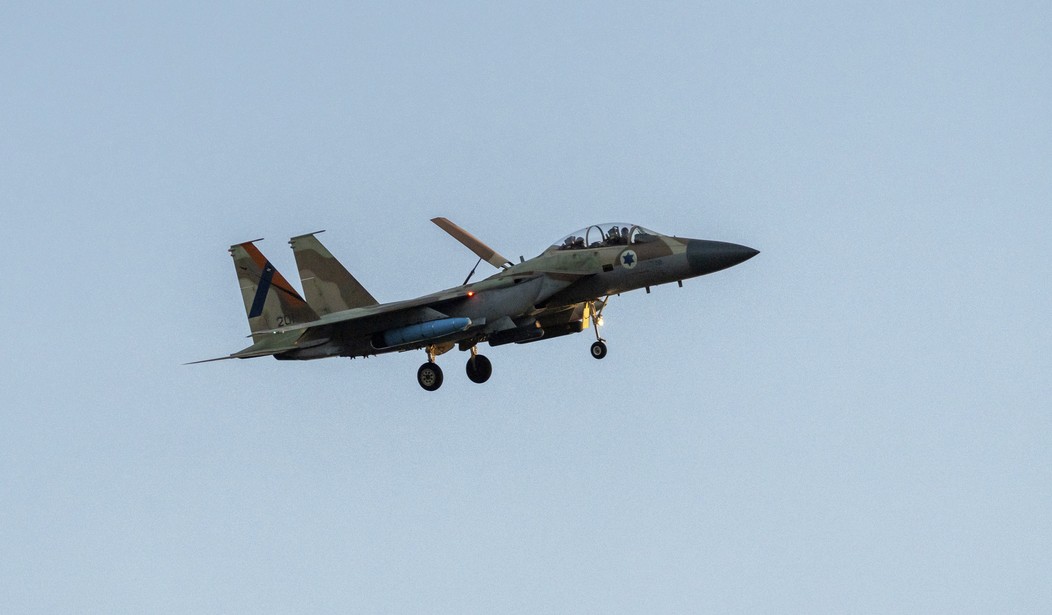When the Cold War officially ended with the collapse of the Soviet Union, many thought that America no longer needed strong defense capabilities. We began to cash in on “peace dividends,” spending less and less on defense. During this time, few thought China would rise and become a major security threat to the U.S. However, that is precisely what happened and why spending less and less on defense is dangerous. We must always be prepared to defend ourselves against near-term threats and have the military might to do so.
While we have spent the past two decades focusing on terrorist threats, China has been focusing on us – closing the capability gap and carefully building a military designed specifically to defeat ours. Slowing down our innovation and relying on older technology only plays into China’s hands.
Developing new technologies with different strengths and advantages makes the job of our adversaries far more difficult. While we have top-notch fighter planes — like the F-35, F/A-18, F-15, and F-22— the communist Chinese regime has been working for years to develop weapons and systems to defeat them. If we want to maintain our strategic advantage, we need to develop and manufacture the next level of technology that will keep us in the lead and make sure that we remain strong and capable. That is why the Air Force’s Next-Generation Air Dominance (NGAD) fighter is needed.
Retaining our existing fleet of fighters remains crucial, yet we must continually enhance our capabilities to outpace potential adversaries. While new programs such as Collaborative Combat Aircraft (CCA) provide some promising future capabilities and technologies, CCA does not obviate the need to develop the next generation of air-dominant fighters. Having a wide variety of weapons systems with differing capabilities, strengths, and vulnerabilities is like having a toolbox with a wide variety of tools. Imagine hiring someone to renovate your home and the only tool they have is a hammer – the job would not get done. With a wide variety of defense platforms, there is always a tool to meet the task at hand.
Recommended
A new air-dominance fighter plane will be developed from the ground up to create a powerful mix of attributes and capabilities — range, survivability, payload, upgradeability, and high-tech mission systems. The ongoing costs of operation and updates will be substantially lower than its predecessors.
This will avoid a problem the Air Force is facing with Lockheed Martin’s F-35 – which flew its first flight almost 20 years ago. Upgrading the F-35 is costing billions of dollars and will be finished a decade later than it should have been. If we design NGAD planes differently, with separate mission systems and safety of flight systems, we can quickly upgrade the plane’s capabilities without needing to re-certify the plane’s safety or flightworthiness. Future fighters won’t just be more capable, they will also be more easily upgradeable to cost-effectively keep ahead of our adversaries.
It is also important to have a varied defense industrial base to avoid single points of failure and heavy dependence on a single company. It is healthy and strategic to have more than one jet engine manufacturer and one high-tech radar developer. We must not forget that competition also promotes innovation and helps keep costs lower for the American taxpayer.
Time is of the essence for NGAD development. We cannot wait until the threat is upon us to start to prepare. If we delay production until a new platform is desperately needed, it will already be too late. We must stay ahead of the threat and deter future conflicts with innovative new technologies and have no time to waste in developing the next generation of air-dominance fighter jets.
More than a decade ago, we slowed down the development of future systems like hypersonics and now our adversaries have the upper hand with those platforms. We stopped investing and developing, but our adversaries did not. We cannot afford to repeat that error. To ensure aerial supremacy, we must move forward quickly with the NGAD program. The future depends on it.

























Join the conversation as a VIP Member